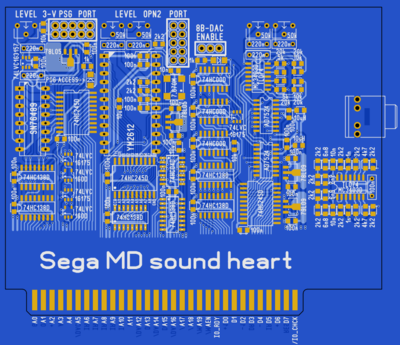Reply 20 of 34, by Tiido
- Rank
- l33t
LFSR is 15bits on TI chip and has taps on bits 0 and 1, white noise has lower periodicity and is mellower in general, 15 bits also means that pulse mode has 6.6666...% duty cycle and also shifted pitch. VDP LFSR is 16bit with taps on bits 0 and 3, resulting in more longer and more "percussive" white noise and pulse mode duty cycle is 6.25% with no pitch shift compared to other channels.
Tone channel counters count down on TI chip and up on VDP, implication is that freq value of 0 produces lowest possible freq (1024) on TI while on VDP, values 0 and 1 both produce same result (1). Games often use freq value of 0 as means to silence the output in Sega stuff, which on TI will produce 110Hz tone rather than inaudible ultrasonic freq (which is eaten by LPFs).
T-04YBSC, a new YMF71x based sound card & Official VOGONS thread about it
Newly made 4MB 60ns 30pin SIMMs ~
mida sa loed ? nagunii aru ei saa 😜
